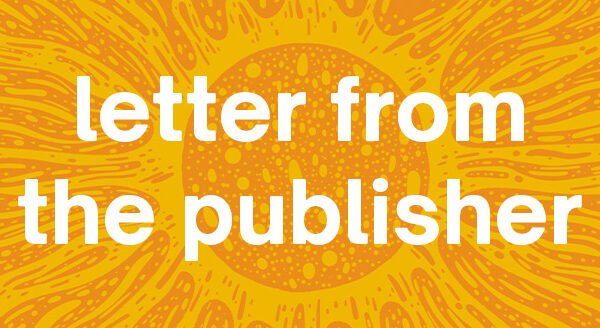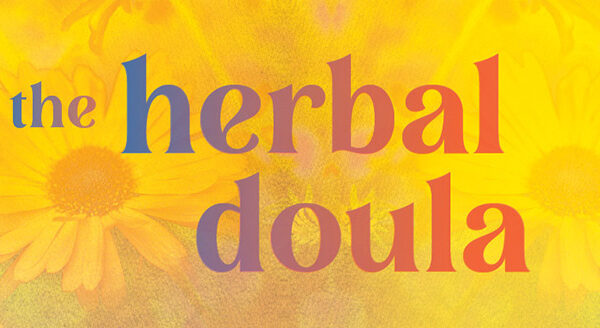
Excerpt from Fresh Banana Leaves: Birth of Western Conservation
Categories: Ecology & Sustainability Excerpt Indigenous Cultures & Anthropology New Release Science & Cosmology Society & Politics
 Birth of Western Conservation
Birth of Western Conservation
By Jessica Hernandez, PhD, author of Fresh Banana Leaves: Healing Indigenous Landscapes Through Indigenous Science
They [settlers] had the Bibles and we had the land, natural resources, and precious metals.We closed our eyes and ended up with their Bibles while they stole our lands, natural resources, and precious metals.
—MARÍA DE JESÚS, my grandmother
Colonization introduced many ideologies that ended up harming Indigenous peoples. We experienced land theft, cultural loss, and genocide. Yet, colonization is not often brought up when we discuss why conservation is needed or why it was birthed as a science field. I believe that in order to do conservation practices, projects, and research justly with Indigenous peoples and communities, scientists who practice conservation need to start by doing these two things:
- Educate themselves on settler colonialism to understand the root causes of why conservation is now needed.
- Reflect on their positionality and reeducate themselves on how they were taught to practice conservation practices that continue to be oppressive toward Indigenous peoples because settler colonialism is deeply embedded in this field.
We often hear the anti-Indigenous statement that the “United States is a nation of immigrants.” This statement ignores the colonization the Americas underwent and the genocide Indigenous peoples faced and continue to face under settler colonialism. This statement also creates a utopia that erases the fact that this is indeed a settler country built on stolen lands by stolen people—slavery. This is the innocent narrative that is created and manifested inside many classrooms to ensure that white people and settlers’ descendants are always comforted for their past sins. It is no surprise why in conservation settler colonialism continues to be ignored as most conservation scientists are trying to undo what their ancestors did or introduced in the Americas during colonization. For Indigenous peoples and scientists, it is important that in the environ- mental discourse, more dialogues and conversations around settler colonialism and the impacts it continues to have on our environments are mentioned and brought to the forefront.
In my graduate school experience, I started with two white cisgender male faculty advisors for both my master’s and doctoral program. However, I started to notice that both advisors were not comfortable with my conversations around settler colonialism and my desire to do conservation projects for my thesis and dissertation that were not rooted in Western science and brought to the forefront Indigenous peoples and their voices. I wanted to do projects that changed the way we are taught to do research in the environmental sciences, including conservation. However, because I brought up racism and settler colonialism, they projected their discomfort as white men onto me.This harmed me and created additional barriers I had to overcome in graduate school as an Indigenous woman. They often referred to me as “hard to mentor,” which played a major role in amplifying my imposter syndrome. I started questioning whether I was indeed hard to mentor, and this is just one story, my story. There are countless other stories of Indigenous students who had to face far worse situations and harm enacted toward them by their advisors.
I already knew that academic institutions were not created for Indigenous peoples, so I had to already overcome this barrier to begin with. However, they made it hard for me to be comfortable in my own skin and identity as an outspoken Indigenous woman and scientist. I was once compared to another female Indigenous student who was more timid and quiet. I was told that they had expected me to also be like that student. However, I was not their norm—what they had normalized as typical behavior given that they had not mentored many Indigenous students. This is another stereotype that is indeed rooted in settler colonialism, as patriarchy teaches men that they should only be the outspoken ones and advocates. Settler colonialism also grants white people the power and privilege to speak over marginalized communities. This experience taught me that I would be navigating other layers of settler colonialism that would further oppress me and try to silence me as I moved toward the end of my doctoral degree. I was making white men who were also environmental scientists and researchers uncomfortable when I was respect- fully questioning why they were doing things the way they were taught. I questioned the teachings they were passing on to me because they were rooted in racism and settler colonialism. This made them uncomfortable, and my experiences show how white scientists ignore settler colonialism because if they start acknowledging it, they have a lot of work to do to confront their white fragility and guilt.
There have been more discussions on racism in the environmental sciences post the antiracism movement led by the Black Lives Matter movement that built momentum in 2020. However, there is much to dissect because unless settler colonialism is acknowledged, the antiracism movement will never get to the root causes of why in the racial caste systems of both the United States, Mexico, and the rest of Latin America, Indigenous and Black people continue to be on the bottom of this hierarchy that makes whiteness its top tier of power and privilege. This dates back to colonization, when both Indigenous and Black people were deemed to be disposable and inferior to whites. Conservation is not a field that is free from subjectivity as it was a field founded by white people, in particular men, to practice their colonial notions toward nature, our environments, and Indigenous peoples.
Conservation is a Western construct that was created as a result of settlers overexploiting Indigenous lands, natural resources, and depleting entire ecosystems. According to National Geographic, conservation is defined as“the care and protection of . . . resources so that they can persist for future generations. It includes maintaining diversity of species, genes, and ecosystems, as well as functions of the environment, such as nutrient cycling.”1 Conservation did not exist precolonization because Indigenous peoples viewed land as communal, meaning no one person owned it. Land was also a part of their identity, Indigeneity. It is important to mention that these values continue to be sustained among many Indigenous communities, and this is why they still have communal food sources and land. I was taught that our lands do not owe us anything. They are not here to feed or shelter us, as our lands were not created to serve us. As I mentioned before, many of our creation stories, how our Indigenous ancestors came into existence, point to them being made from earth, our lands.This means that our lands are a part of who we are and in order to respect and thank them for giving us life we have to protect them.
However, during colonization, everything changed, as settlers stole our lands and made them their property while leaving us out of these discourses because they had the notion that we would go extinct or completely assimilate. This is why they gave us our Bibles as they stole our lands, natural resources, and precious metals as my grandmother always told me.
As my grandmother mentioned, settlers came for our land, natural resources, and precious metals; thus they stole our land and later com- modified it and made it their property. Conservation, in my view, aims to undo some of the harm settlers generated, but many conservation initiatives continue to fail to uplift and center Indigenous peoples. Indigenous peoples always knew to take only what they needed, and they continue to uphold some of these values today. Taking more than what is needed is deemed as bad medicine in my Zapotec community because greed pulls us toward evil spirits and thoughts. Greediness also angers our gods and deities, and when they get angry they end up punishing our community, not just the greedy person.
We also have to ask our natural resources, both plant and animal relatives, for permission before we extract, hunt, or remove them from their environment. For example, when I remove a plant from its location, I ask its spirit for permission, pray before I remove it, and leave medicine in its place. This medicine consists of copal, lavender, and a medicinal plant native to the region where I am removing this plant. For example, if I am removing a plant in the state of Washington, I often incorporate cedar into the gift I leave behind in its place. Indigenous peoples have built and sustained reciprocal relationships with their plant and animal relatives. If something is taken, something is left in return. Given that it is a spirit we are removing, we must leave part of our spirits in its place. This is why the gifts we leave behind when we remove the plants are part of our traditional medicines, like copal is for my Zapotec community. This is the mentality that allowed our lands to be replenished with natural resources.
All of that changed during colonization and postcolonization. Land is considered our mother for many Indigenous communities, including my Zapotec and Maya Ch’orti’ nations. Thus, it never had a monetary or economic value like what was imposed by settlers and colonizers. It is hard to envision selling or owning our biological mother as humans, and this is the same way we view our Mother Earth. However, colonization introduced and created systems that were driven by capitalism and generating commonwealth for colonizer countries and descendants across the Americas. This mentality and way of viewing nature as a commodity and land as a property created boom-bust cycles that impacted both the native flora and fauna ecosystems of the Americas. Boom-bust cycles refer to the rapid decline of species due to over extraction, overharvest, and over- hunting. This is the main reason why the population size of a lot of native and cultural keystone species severely declined. Coupled with deforestation and other land loss, many animal and plant species were severely threatened and are now endangered. For Oaxaca, these boom-bust cycles that resulted in the overhunting of many wildlife species and destruction of their habitats led to the rapid decline of many wildcats native to the region of Oaxaca and other parts of Latin America. These wildcat species include jaguars (Panthera onca), margays (Leopardus wiedii), and ocelots (Leopardus pardalis), among others. The jaguar is a cultural keystone to the Zapotec people. This is why the Zapotec deity Cocijo, god of rain and lightning, had the facial characteristics of the beedxeʼ (jaguar) to rep- resent our earth. This god, like many others that are vital to the Zapotec people and culture, represents parts of their natural elements and plant and animal relatives.
This is how important and integral natural elements and resources are to many Indigenous peoples across Latin America.All gods and deities are known to control the natural elements such as the sun, rain, and lightning, among others. Natural elements are what nourish all natural resources. It was a spiritual cycle that was created between humans, natural resources, and gods and deities (spiritual and powerful beings). This spiritual cycle represents the strong connection and holistic view of nature Indigenous people continue to sustain. Everything is interconnected from outer space (e.g., moon, stars, etc.) to the bottom of our oceans. However, Western knowledge and way of thinking have separated many of our landscapes into plots of land, and this is clearly seen throughout conservation initiatives and projects. The establishment of colonial borders and borders within several nature preserves continues to separate entire landscapes into smaller plots of land.
Native animals to the region play an important role in Indigenous ancestral history.These native and important animals are what I refer to as keystone cultural species. Without them, a component of our Indigenous ancestral history is lost.This is why the jaguar, among other wildlife native to Oaxaca and across Latin America, are important to Indigenous communities. If the jaguar were to become extinct, the spirits that guard the god Cocijo will also become extinct.This is a way Indigenous peoples continue to experience cultural loss. When animals or plant species become endangered or threatened, Indigenous cultures are also threatened.
Cocijo has been present among the Zapotec culture since time immemorial, or as anthropologists have coined, since the pre-Columbian era. Cocijo, among other deities and gods, has been found in many Zapotec codices (glyphs), written records found on archaeological sites. Unfortunately, during colonization, our history was erased and burned by colonizers and settlers. They wanted to destroy our identity because they wanted to bring forward their racial caste and other systems to steal our lands and exploit our natural resources. We lost many of the relationships our ancestors had with our deities and gods. Now we are reclaiming those histories and reconnecting with our ancestral spirituality that colonizers burned so that we could forget it and they could eradicate it. Our codices were burned, and through this action colonizers burned the historical written records our ancestors were maintaining for our cultures.3 This is why settler colonialism is important for conservationists to also start discussing and acknowledging. It was a genocide that no settler country (e.g., United States or Mexico) wants to acknowledge because they want to continue portraying their innocent history of how the Americas were founded and built.
When discussing conservation it is important to mention that conservation was founded as a movement to preserve wilderness, wildlife, and other natural resources. Given that it is not an Indigenous way of life, because it was not needed before colonization, many Indigenous languages do not have a word that translates directly to conservation. In the Zapotec variant that my family speaks, the closest word that we could think of that may refer to conservation is gapanú or rianda. Gapanú means to take care of something and rianda means to heal. However, these two words do not embody what conservation means to its extent. Thus Indigenous languages can serve as indicators of what has been introduced into our lands.This is how we know for a fact that conservation indeed did not exist among our communities precolonization.
However, our languages also adapt with modernization, and our vocabulary continues to grow as well. For my Zapotec people, taking care of or healing are the closest words that come to mind when we try to explain conservation in our Indigenous languages. This is why I opt to use the word healing as opposed to conservation, as conservation is not really a part of the identity or cultural values I uphold as an Indigenous woman. For me, healing or caring are more aligned with my culture and Indigeneity.




